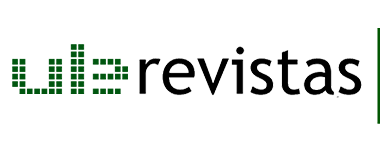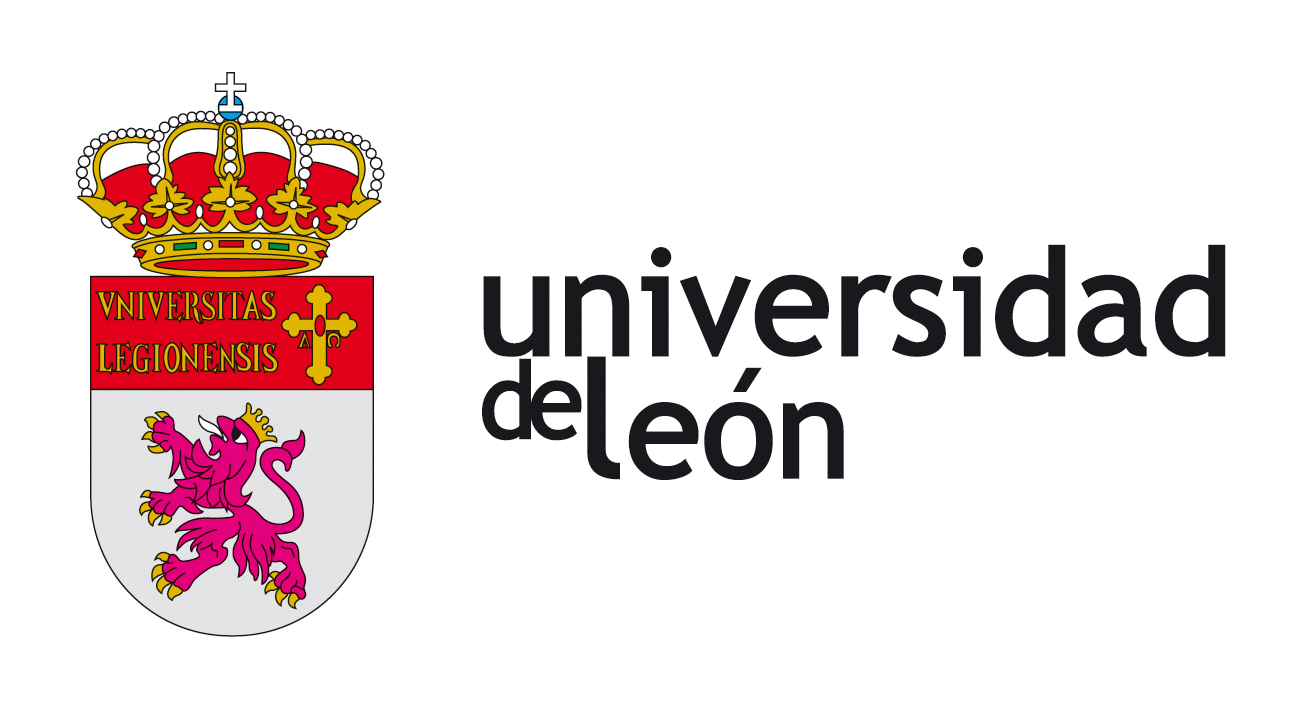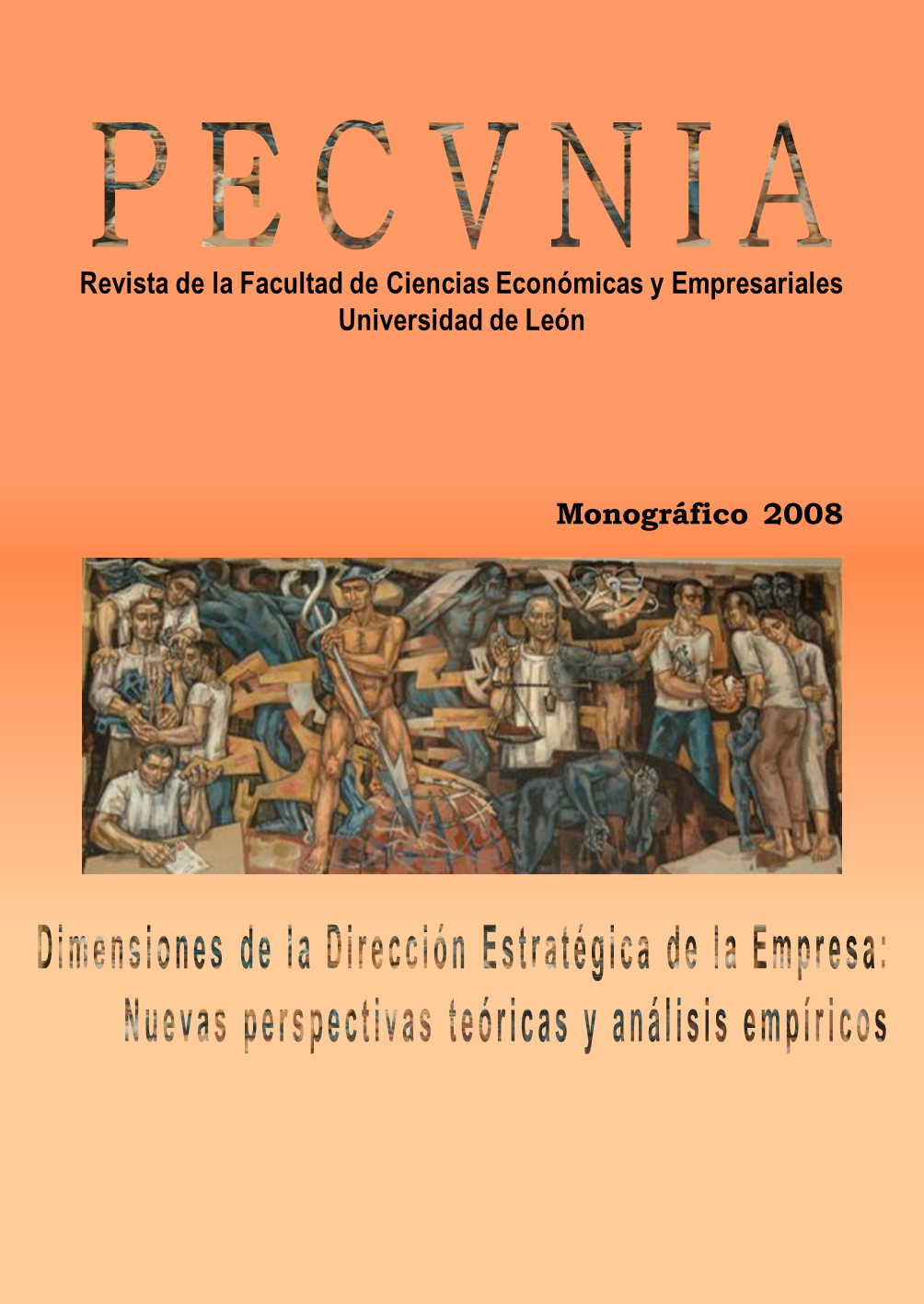La percepción del entorno organizativo y la creatividad : análisis de las dimensiones del clima laboral que determinan el comportamiento creativo del empleado en la empresa
DOI :
https://doi.org/10.18002/pec.v0i2008.792Mots-clés :
Clima psicológico, Creatividad, Psychological climate, CreativityRésumé
La creatividad se está convirtiendo en un fenómeno de especial interés para las organizaciones. Por ello, existe un interés creciente por comprender cuáles son los factores responsables del rendimiento creativo en los entornos laborales. A pesar de ello, todavía existen lagunas importantes en la literatura sobre como influye la existencia en la empresa de un clima que apoye a la innovación. Con el fin de aportar nueva evidencia empírica al respecto, el objetivo del presente trabajo consiste en analizar cómo influye en la creatividad de los empleados, la percepción que éstos tengan de que el clima existente en la organización apoya a la innovación. Para ello, utilizando el concepto de clima psicológico y adoptando una definición de creatividad en términos de producto, se realizó un estudio entre los empleados de una empresa del sector de la automoción. Tras someter la medida del clima a un análisis factorial por el método de componentes principales, que reveló la existencia de cinco dimensiones significativas, se realizó un análisis de regresión para ver la influencia de cada factor en la creatividad de los trabajadores. Los resultados logrados revelan la importancia que tiene esta variable en la explicación del rendimiento creativo. De esta forma se ha puesto de manifiesto que la empresa debe crear un entorno laboral favorable a la creatividad, mediante los mecanismos adecuados a tal efecto. Así, la provisión de recursos para la generación y el desarrollo de ideas, la existencia de una comunicación fluida en el seno de la empresa, la participación de todos los trabajadores en la toma de decisiones o la consideración del esfuerzo realizado parecen ser de especial relevancia para conseguir este propósito.Creativity is becoming a particularly important phenomenon for organizations. There is consequently increasing interest in understanding the factors responsible for creative performance in labor environments. In spite of this, important gaps still exist in the literature about the influence of the work environment on creativity. With the aim of offering new empirical evidence on this question, the object of the current work is to analyze how employees' perception about the organizational climate influences their creativity. With this aim, using the concept of psychological climate and adopting a definition of creativity in terms of the product, the work studies the employees of a firm from the automotive sector. We carried out a principal components factor analysis, with the aim being to obtain the dimensions or factors summarizing the main policies or procedures followed by the firm in favor of creativity. We obtained five significant dimensions and then, made a regression analysis in order to determine how each of the related to creativity. The findings reveal the importante of this variable for explaining creative performance. Thus, providing resources for the generation and development of ideas, the existente of a fluid communication within the firm, the participation of all the workers in the decisionmaking, and the recognition of workers' efforts all seem to be particularly relevant for achieving this purpose.
Téléchargements
Références
ABBEY, A. & J.W. DICKSON (1983) "R&D Work Climate and Innovation in Semiconductors", Academy of Management Journal, 26 (2), pp. 362-368.
AMABILE, T.M. (1982) "Social Psychology of Creativity: A Consensual Assessment Technique", Journal of Personality and Social Psychology, (5), pp. 997-1013.
AMABILE, T.M. (1983) The Social Psychology of Creativity. New York: Springer-Verlag.
AMABILE, T.M. (1988) "A Model of Creativity and Innovation in Organizations", Research in Organizational Behavior, 10, pp. 123-167.
AMABILE, T.M. (1996) Creativity in Context. Oxford, USA: Westview Press. AMABILE, T.M. (1997) "Motivating Creativity in Organizations: On Doing what You Love and Loving what You Do", California Management Review, 40 (1), pp. -58.
AMABILE, T.M. & R. CONTI (1997) "Environmental Determinants of Work Motivation, Creativity and Innovation: The Case of R&D Downsizing". R. GARUD, P. NAYAR & Z. SHAPIRA (Eds.) Technological Innovation, Oversights and Foresights. New York: Cambridge University Press, pp. 111-125.
AMABILE, T.M. & R. CONTI (1999) "Changes in the Work Environment for Creativity During Downsizing", Academy of Management Journal, 42 (6), pp. 630-640.
AMABILE, T.M., R. CONTI H. COON, J. LAZENBY & M. HERRON (1996) "Assessing the Work Environment for Creativity", Academy of Management Journal, 39 (5), pp. 1154-1184.
AMABILE, T.M., P. GOLDFARB & S.C. BRACKFIELD (1990) "Social Influences on Creativity: Evaluation, Coaction, and Surveillance", Creativity Research Journal, , pp. 6-21.
AMABILE, T.M. & N. GRYSKIEWICZ (1989) "The Creative Environment Scales: The Work Environment Inventory", Creative Research Journal, 2, pp. 231-254.
AMABILE, T.M., K.G. HILL, B.A. HENNESSEY & E. TIGHE (1994) "The Work Preference Inventory: Assessing Intrinsic and Extrinsic Motivational Orientations", Journal of Personality and Social Psychology, 66, pp. 950-967.
AMABILE, T.M., J.S. MUELLER, W.B. SIMPSON, C.N. HADLEY, S.J. KRAMER & L. FLEMING (2002) "Time Pressure and Creativity in Organizations: A Longitudinal Field Study", HBS Working Paper, nº 02-073.
ANDREWS, F.M. (1975) "Social and Psychological Factors which Influence the Creative Process". I.A. TAYLOR & J.W. GETZELS (Eds.) Perspectives in Creativity. Chicago: Aldine, pp. 117-145.
ANGLE, H.L. (2000) "Psychology and Organizational Innovation". A.H. VAN DEN VEN, H.L. ANGLE & M.S. POOLE (Eds.) Research on the Management of Innovation. New York: Oxford University Press, pp. 135-170.
BAER, J. (1994) "Divergent Thinking Is Not a General Trait: A Multidomain Training Experiment", Creativity Research Journal, 7 (1), pp. 35-46.
BAILYN, L. (1985) "Autonomy in the Industrial R&D Lab", Human Resource Management, 24, pp. 129-146.
BRUNER, J.S. (1964) "The Conditions of Creativity". H.E. GRUBER, G. TERRELL & M. WERTHEIMER (Eds.) Contemporary Approaches to Creative Thinking, ª edición. New York: Prentice Hall, pp. 1-30.
CAMPBELL, J.P.; M. DUNETTE, E.E. LAWLER III & K.E. WEIK, Jr. (1970) Managerial Behaviour, Performance, and Effectiveness. New York: McGraw-Hill.
COHEN, W.M. & D.A. LEVINTHAL (1990) "Absorptive Capacity: A New Perspective on Learning and Innovation", Administrative Science Quarterly, 35, pp. 128-152.
CSIKSZENTMIHALYI, M. (1988) "Society, Culture, and Person: A Systems View of Creativity". R.J. STERNBERG (Ed.) The Nature of Creativity. New York: Cambridge University Press, pp. 325-339.
CSIKSZENTMIHALYI, M. (1990) "The Domain of Creativity". M.A. RUNCO & R.S. ALBERT (Eds.) Theories of Creativity. Newpbury Park, CA: Sage, pp. 190-212.
CUMMINGS, A. & G.R. OLDHAM (1997) "Enhancing Creativity: Managing Work Contexts for the High Potential Employee", California Management Review, 40 (1), pp. 23-38.
CUMMINGS, L. (1965) "Organizational Climates for Creativity", Academy of Management Journal, 3, pp. 220-222.
DAMANPOUR, F. (1991) "Organizational Innovation: A Meta-Analysis of Effects of Determinants and Moderators", Academy of Management Journal, 34 (3), pp. 55-590.
DASTMALCHIAN, A. (1986) "Environmental Characteristics and Organisational Climate: An Exploratory Study", Journal of Management Studies, 23 (6), pp. 609-627.
DECI, E.L. & R.M. RYAN (1985) Intrinsic Motivation and Self-Determination in Human Behavior. New York: Plenum.
DELBECQ, A.L. & P.K. MILLS (1985) "Managerial Practices that Enhance Innovation", Organizational Dynamics, 14 (1), pp. 24-34.
EKVALL, G. (1987) "The Climate Metaphor in Organization Theory". B.M. BASS & P.J.D. DRENTH (Eds.) Advances in Organizational Psychology. Beverly Hills CA: Sage Publications, pp. 177-190.
ELLISON, R.L.; B. MCDONALD, L. JAMES, D. FOX & C.W. TAYLOR (1968) An Investigation of Organizational Climate. Greensboro, NC: Richardson Foundation.
ELLISON, R.L.; B. MCDONALD, L. JAMES,& C.W. TAYLOR (1969) "Relationship of Organizational Characteristics to Measures of Scientific Performance", 77th Annual Conference of A.P.A., 4 (2), pp. 603-604.
ETTLIE, J.E. & R.D. O'KEEFE (1982) "Innovative Attitudes, Values and Intentions in Organizations", Journal of Management Studies, 19 (2), pp. 163-182.
FINDLAY, C.S. & C.J. LUMDSEN (1988) "The Creative Mind: Toward an Evolutionary Theory or Discovery and Innovation", Journal of Social Biological Structure, 11, pp. 3-55.
FORD, C.M. (1995) "Creativity Is a Mystery: Clues from the Investigators' Notebooks". C.M. FORD & D.A. GIOIA (Eds.) Creative Action in Organizations: Ivory Tower Visions and Real World Voices. Newbury Park, CA: Sage Publications, pp. 12-49.
FORD, C.M. (1996) "A Theory of Individual Creative Action in Multiple Social Domains", Academy of Management Review, 21 (49), pp. 1112-1142.
FORD, C.M. (1999) "Interpretive Style, Motivation, Ability and Context as Predictor of Executives' Performance", Creativity and Innovation Management, 8 (3), pp. 188-196.
FOREHAND, G. & B. GILMER (1964) "Environmental Variation in Studies of Organizational Behavior", Psychological Bulletin, 22, pp. 361-382.
FRIEDLANDER, F. & N. MARGULIES (1969) "Multiple Impacts of Organizational Climate and Individual Value System upon Job Satisfaction", Personnel Psychology, 22, pp. 171-183.
GALBRAITH, J.R. (1982) "Designing the Innovating Organization", Organizational Dynamics, 10, Winter, pp. 5-25.
GRUBER, H.E. (1988) "The Evolving Systems Approach to Creative Work", Creativity Research Journal, 1 (1), pp. 27-51.
GUILFORD, J.P. (1950) "Creativity", American Psychologist, 5, pp. 444-454.
GUILFORD, J.P. (1977) Way beyond the IQ: Guide to Improving Intelligence and Creativity. Buffalo, NY: Creative Education Foundation.
GUILFORD, J.P. (1984) "Varieties of Divergent Production", Journal of Creative Behavior, 18, pp. 1-10.
ISAKSEN, S.G. (1987) "An Orientation to the Frontiers of Creativity Research". S. ISAKSEN (Ed.) Frontiers of Creativity Research: Beyond the Basics. Buffalo: Bearly Limited, pp. 1-31.
ISAKSEN, S.G. & G. KAUFMANN (1990) "Adaptators and Innovators: Different Perspectives of the Psychological Climate for Creativity", Studia Psychologia, 32, pp. 129-140.
JAMES, L.; L. JAMES & D. ASHE (1990) "The Meaning of Organizations: The Role of Cognition and Values". B. SCHNEIDER (Ed.) Organizational Climate and Culture. San Francisco, CA: Jossey-Bass Inc., pp. 40-84.
JAMES, L. & S. SELLS (1981) "Psychological Climate: Theoretical Perspectives and Empirical Research". D. MAGNUSSEN (Ed.) Toward a Psychology of Situations: An Interactional Perspective. Hillsdale, NJ: Erlbaum, pp. -295.
JAMES, L.R. & L.A. JAMES (1989) "Integrating Work Environment Perceptions: Explorations into the Measurement of Meaning", Journal of Applied Psychology, 74, pp. 739-751.
JAMES, L.R. & A.P. JONES (1974) "Organizational Climate: A Review of Theory and Research", Psychological Bulletin, 81 (12), pp. 1096-1112.
JONES, A. & L. JAMES (1979) "Psychological Climate: Dimensions and Relationships of Individual and Aggregated Work Environment Perceptions", Organizational Behavior and Human Performance, 23, pp. -233.
JOYCE, W.F. & J. SLOCUM (1982) "Climate Discrepancy: Refining the Concepts of Psychological and Organizational Climate", Human Relations, 35 (11), pp. 951-972.
KANTER, R.M. (1983) The Change Masters. New York: Simon & Schuster.
KANTER, R.M. (1984) "Innovation: Our Only Hope for Times Ahead?", Sloan Management Review, 25, pp. 51-55.
KANTER, R.M. (1986) "Creating the Creative Environment", Management Review, 75, pp. 11-12.
KANTER, R.M. (1988) "When a Thousand Flowers Bloom: Structural, Collective, and Social Conditions for Innovation in Organizations", Research in Organizational Behavior, 10, pp. 169-211.
KATZ, D. & R.L. KAHN (1978) The Social Psychology of Organizations, 2nd ed.. New York: Wiley.
KIMBERLY, J.R. (1981) "Managerial Innovation". P.C. NYSTROM & W.H. STARBUCK (Eds.) Handbook of Organizational Design. New York, Oxford University Press, pp. 84-104.
KIMBERLY, J.R. & M.J. EVANSIKO (1981) "Organizational Innovation: The Influence of Individual, Organizational, and Contextual Factors on Hospital Adoption of Technological and Administrative Innovations", Academy of Management Journal, 24 (4), pp. 689-713.
KOESTLER, A. (1964) The Act of Creation. London: Hutchinson. KOPELMAN, R.E.; A.P. BRIEF & R.A. GUZZON (1990) "The Role of Climate and Culture in Productivity". B. SCHNEIDER (Ed.) Organizational Climate and Culture. San Francisco, CA: Jossey-Bass Inc., pp. 282-318.
MCKINNON, D.W. (1962) "The Nature and Nurture of Creativity Talent", American Psychologist, 17, pp. 484-495.
MCKINNON, D.W. (1970) "The Personality Correlates of Creativity: A Study of American Architects". P.E. VERNON (Ed.) Creativity: Selected Readings. New York: Penguin Books, pp. 289-311.
MCKINNON, D.W. (1978) In Search of Human Effectiveness: Identifying and Developing Creativity. Búfalo, NY: Creative Education Foundation.
MARCH, J.G. & H.A. SIMON (1958) Organizations. New York: Wiley.
MUMFORD, M.D. (2000) "Managing Creative People: Strategies and Tactics for Innovation", Human Resource Management Review, 10 (3), pp. 313-351.
MUMFORD, M.D. & S.B. GUSTAFSON (1988) "Creativity Syndrome: Integration, Application and Innovation", Psychological Bulletin, 103, pp. 27-43.
OLDHAM, A. & G.R. CUMMINGS (1996) "Employee Creativity: Personal and Contextual Factors at Work", Academy of Management Journal, 39 (3), pp. 607-634.
PAOLILLO, J.G. & W.B. BROWN (1978) "How Organizational Factors Affect R and D Innovation", Research Management, 21, pp. 12-15.
PAYNE, R.; D. LANE & M. JABRI (1990) "A Two Dimensional Person-Environment Fit Analysis of the Performance, Effort, and Satisfaction of Research Scientists", British Journal of Management, 1, pp. 45-57.
PAYNE, R. & D.S. PUGH (1976) "Organizational Structure and Climate". M.D. DUNNETE (Ed.) Handbook of Industrial and Organizational Psychology. Chicago: Randall-McNally, pp. 1125-1173.
PELZ, D.C. (1956) "Some Social Factors Related to Performance in a Research Organization", Administrative Science Quarterly, 1, pp. 310-325.
PRITCHARD, R.D. & B.W. KARASIK (1973) "The Effects of Organizational Climate on Managerial Job Performance and Job Satisfaction", Organizational Behavior and Human Performance, 9, pp. 123-146.
REICHERS, A.E. & B. SCHNEIDER (1990) "Climate and Culture: An Evolution of Constructs". B. SCHNEIDER (Ed.) Organizational Climate and Culture. San Francisco, CA: Jossey-Bass Inc., pp. 5-39.
RHODES, M. (1987) "An Analysis of Creativity". S.C. ISAKSEN (Ed.) Frontiers of Creativity Research. Buffalo: Bearly Limited, pp. 216-222.
ROGERS, C. (1954) "Toward a Theory of Creativity", Review of General Semantics, 11 (4), pp. 249-260.
SCHNEIDER, B. (1975) "Organizational Climates: An Essay", Personnel Psychology, 28, pp. 447-479.
SCOTT, S.G. & R.A. BRUCE (1994) "Determinants of Innovative Behaviour: A Path Model of Individual Innovation in the Work Place", Academy of Management Journal, 37 (3), pp. 580-607.
SHALLEY, C.E. (1991) "Effects of Productivity Goals, Creativity Goals, and Personal Discretion on Individual Creativity", Journal of Applied Psychology, 76, pp. 179-185.
SHALLEY, C.E. (1995) "Effects of Coaction, Expected Evaluation, and Goal Setting on Creativity and Productivity", Academy of Management Journal, 38 (2), pp. 483-503.
SHALLEY, C.E. , L.L. GILSON & T.C. BLUM (2000) "Matching Creativity Requirements and the Work Environment: Effects on Satisfaction and Intentions to Leave", Academy of Management Journal, 43 (2), pp. 215-223.
SHALLEY, C.E. , G.R. OLDHAM & J.F. PORAC (1987) "Effects of Goal Difficulty, Goal Setting Method, and Expected Evaluation on Intrinsic Motivation", Academy of Management Journal, 30, pp. 553-563.
SHALLEY, C.E. & J.E. PERRY-SMITH (2001) "Effects of Social-Psychological Factors on Creative Performance: The Role of Informational and Controlling Expected Evaluation and Modelling Experience", Organizational Behavior and Human Decision Processes, 84 (1), pp. 1-22.
SIEGEL, S. & W. KAEMMERER (1978) "Measuring the Perceived Support for Innovation in Organizations", Journal of Applied Psychology, 63, pp. -562.
STAW, B.M. (1990) "An Evolutionary Approach to Creativity and Innovation". M.A. WEST & J.L. FARR (Eds.) Innovation and Creativity at Work. Chichester, UK: Wiley, pp. 287-306.
STEIN, M.I. (1974) Stimulating Creativity, vol. 1. New York, USA: Academic Press.
TAGGAR, S. (2002) "Individual Creativity and Group Ability to Utilize Individual Creative Resources: A Multi-level Model", Academy of Management Journal, 45 (2), pp. 315-321.
TAYLOR, C.W. (1963) "Variables Related to Creativity and Productivity in Men in Two Research Laboratories". C.W. TALYLOR & R. BARRON (Eds.) Scientific Creativity: Its Recognition and Development. New York: Wiley, pp. -597.
TAYLOR, C.W. (1972) "Can Organizations Be Creative Too?". C.W. TAYLOR (Ed.) Climate for Creativity. Elmsford, NY: Pergamon Press, pp. 1-22.
TESLUK, P.E.; J.L. FARR & S.R. KLEIN (1997) "Influences of Organizational Culture and Climate on Individual Creativity", Journal of Creative Behavior, 31 (1), pp. 27-41.
TIERNEY, P. & S.M. FARMER (2002) "Creative Self-Efficacy: Potential Antecedents and Relationship to Creative Performance", Academy of Management Journal, 45 (6), pp. 1137-1148.
TIERNEY, P., S.M. FARMER & G.B. GRAEN (1999) "An Examination of Leadership and Employee Creativity: The Relevance of Traits and Relationships", Personnel Psychology, 52, pp. 591-620.
TORRANCE, E.P. (1962) "Developing Creative Thinking Through School Experiences". S.J. PARNES & H.F. HARDING (Eds.) A Source Book for Creative Thinking. New York: Scribner's, pp. 31-47.
TORRANCE, E.P. 1967) "Give the 'Devil' His Dues". J.G. GOUAN, G.D. DEMOS & E.P. TORRANCE (Eds.) Creativity: Its Educational Implications. New York: Wiley.
TORRANCE, E.P. (1974) Torrance Test of Creative Thinking: Norms-Technical Manual. Lexington, MA: Ginn.
TURNIPSEED, D. (1994) "The Relationship between the Social Environment of Organizations and the Climate for Innovation and Creativity", Creativity and Innovation Management, 3 (3), pp. 184-195.
VAN DEN VEN, A.H. (1986) "Central Problems in the Management of Innovation", Management Science, 32, pp. 590-607.WALLAS, G. (1926) The Art of Thought. New York: Harcourt Brace Jovanovich.
WEISBERG, R.W. (1986) Creativity, Genius and Other Myths. New York: Freeman.
WEISBERG, R.W. (1993) Creativity: Beyond the Myth of Genius. New York: Freeman.
WEISBERG, R.W. (1999) "Creativity and Knowledge: A Challenge to Theories". R.J. STERNBERG (Ed.) Handbook of Creativity. Cambridge UK: Cambridge University Press, pp. 226-250.
WERTHEIMER, M. (1945) Productive Thinking. New York: Harper.
WEST, M.A. & J.L. FARR (1990) "Innovation at Work". M.A. WEST & J.L. FARR (Eds.) Innovation and Creativity at Work. Chichester, England: Wiley, pp. 1-13.
WOODMAN, R.W.; J.E. SAWYER & R.W. GRIFFIN (1993) "Toward a Theory of Organizational Creativity", Academy of Management Review, 18 (2), pp. 293-321.
ZALTMAN, G.; R. DUNCAN & J. HOLBECK (1973) Innovations and Organizations. London: Wiley.
ZHOU, J. & J.M. GEORGE (2001) "When Job Dissatisfaction Leads to Creativity: Encouraging the Expression of Voice", Academy of Management Journal, (4), pp. 682-697.
Téléchargements
Publiée
Comment citer
Numéro
Rubrique
Licence
(c) Tous droits réservés María Felisa Muñoz Doyague 2008

Ce travail est disponible sous licence Creative Commons Attribution - Pas d’Utilisation Commerciale - Partage dans les Mêmes Conditions 4.0 International.
Los autores que publican en esta revista están de acuerdo con los siguientes términos:- Los autores ceden de forma no exclusiva los derechos de explotación (reproducción, distribución, comunicación pública, transformación) a la Universidad de León, por lo que pueden establecer, por separado, acuerdos adicionales para la distribución no exclusiva de la versión de la obra publicada en la revista (por ejemplo, alojarlo en un repositorio institucional o publicarlo en un libro), con un reconocimiento de su publicación inicial en esta revista.
- Este trabajo se encuentra bajo la Creative Commons Attribution-NonCommercial-ShareAlike 4.0 International License. Puede consultarse desde aquí la versión informativa y el texto legal de la licencia.
- Se permite y se anima a los autores a difundir electrónicamente las versiones pre-print (versión antes de ser evaluada) y/o post-print (versión evaluada y aceptada para su publicación) de sus obras antes de su publicación, ya que favorece su circulación y difusión más temprana y con ello un posible aumento en su citación y alcance entre la comunidad académica.












